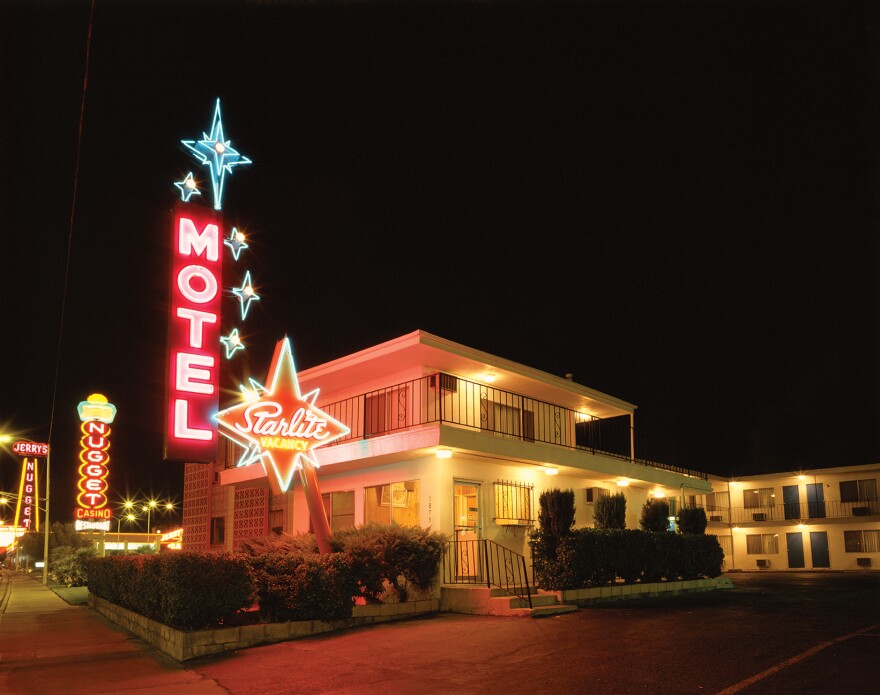By looking at Las Vegas’ motels and street art, two new books explore the city’s ephemeral nature
When The New York Times recently posed the headline “Vegas as a Literary Hub?,” its answer was a refreshing report that positioned the city as something far deeper than its sins. Finally!
Those who have long understood this about Las Vegas celebrated this as a blip in the media matrix, one that often leans on the stereotypes, while ignoring the thousands of culturati who have left their marks here — from the designers and benders of neon to the innumerable performers, musicians, and writers who have made Las Vegas home.
One of those is James Stanford, a Vegas-born artist and photographer who added “publisher” to his résumé with the 2006 founding of Smallworks Press. A purveyor of books focused on culture, Smallworks recently ramped up its release schedule with three new titles. Two are of particular interest to students and fans of Las Vegas. (The third, Compass of the Ephemeral, collects aerial photos of Burning Man taken by festival cofounder Will Roger.)
Motel Vegas is a photo-driven revisit of our mid-century motor hotels and their neon signs. It’s a coffeetable book scaled down for our minimalist tendencies and sprinkled with a handful of thoughtful essays, including one by architect and Vegas observer Alan Hess, who notes that while “Vegas did not invent neon, it did perfect it.” Additional essays by Stanford, Desert Companion Deputy Editor Scott Dickensheets, and Vegas historian Bob Stoldal, bookend a lengthier one by author and photographer Fred Sigman.
The essays provide context to a photologue of a Las Vegas long gone, yet somehow still here. Historic images contrast with more recent shots of spots like the Par-A-Dice Hotel and Valley Motel, forcing us to reconsider our place in the scorching sun and what the years have done to it. It’s a somewhat jarring journey down memory lane. The historic images, many gleaned from postcards and promotional brochures, depict the motels from their best angle, while the more recent photos feel like found snaps of a postapocalyptic zone, a casual depiction of ruin porn, despite some of them being of places where people still live.
The more optimistic release, despite (or because of) the pointed political statements often found in the art, is Street Art Las Vegas by William Shea and Patrick Lai. Unexpectedly, it paints a portrait of Las Vegas as a “normal” metropolis by cataloging a wide swath of globally recognized urban art styles, including massive murals commissioned for Downtown’s annual Life Is Beautiful festival, the ever-evolving spray-can graffiti works found throughout the Arts District, and many other pieces hidden away on rooftops, alleyway walls, and along the drainage tunnels of suburbia.
In capturing an art form that is by nature and design ephemeral, Street Art offers an interesting juxtaposition to Motel Vegas. There, distinguished architectural subjects have been left to slowly rot over decades. Contrastingly, blazingly good street art pieces are often defaced or replaced with something bigger, bolder, and badder before the paint even dries. That alone makes Street Art Las Vegas a valuable record of many pieces that have come and gone.
Taken together, the two books offer a unique study on the nature of permanence, art, commerce, and culture, causing us to wonder whether our city’s ever-shifting, disposable nature is something to be looked upon with disdain, or celebrated as undeniably modern.









